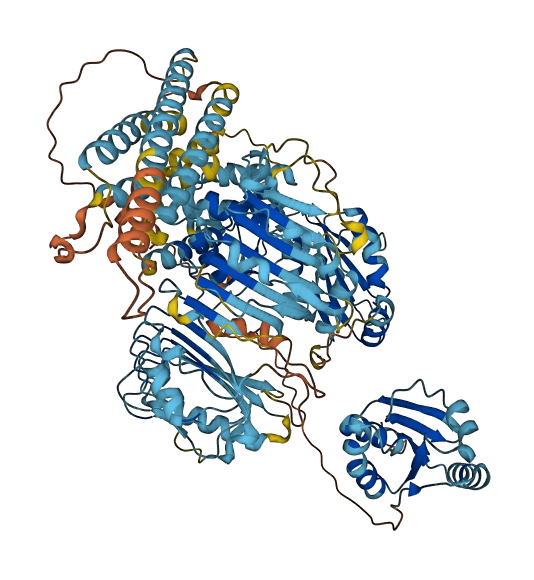- Information
- Symbol: Pita,Pi-4a
- MSU: LOC_Os12g18360
- RAPdb: Os12g0281300
- PSP score
- LOC_Os12g18360.2: 0.4346
- LOC_Os12g18360.1: 0.179
- PLAAC score
- LOC_Os12g18360.2: 0
- LOC_Os12g18360.1: 0
- pLDDT score
- 74.38
- Protein Structure from AlphaFold and UniProt
 )
)
- MolPhase score
- LOC_Os12g18360.1: 0.179
- LOC_Os12g18360.2: 0.4346
- MolPhaseResult
- Publication
- Fine mapping and DNA marker-assisted pyramiding of the three major genes for blast resistance in rice, 2000, TAG Theoretical and Applied Genetics.
- Molecular diversity in rice blast resistance gene Pi-ta makes it highly effective against dynamic population of Magnaporthe oryzae, 2013, Funct Integr Genomics.
- Direct interaction of resistance gene and avirulence gene products confers rice blast resistance, 2000, EMBO J.
- Molecular evolution of the Pi-ta gene resistant to rice blast in wild rice Oryza rufipogon, 2008, Genetics.
- Development of Dominant Rice Blast Resistance Gene Markers, 2002, Crop Science.
- Characterization ofPi-tablast resistance gene in an international rice core collection, 2009, Plant Breeding.
- Molecular evolution of the rice blast resistance gene Pi-ta in invasive weedy rice in the USA, 2011, PLoS One.
- Identification of a new locus, Ptrt, required for rice blast resistance gene Pi-ta-mediated resistance, 2008, Mol Plant Microbe Interact.
- tA single amino acid difference distinguishes resistant and susceptible alleles of the rice blast resistance gene Pi-ta, 2000, Plant Cell.
- Statistical Inference of Selection and Divergence of the Rice Blast Resistance Gene Pi-ta, 2014, G3 (Bethesda).
- Genbank accession number
- Key message
- Rice blast disease resistance to the fungal pathogen Magnaporthe grisea is triggered by a physical interaction between the protein products of the host R (resistance) gene, Pi-ta, and the pathogen Avr (avirulence) gene, AVR-pita
- Resistance to the blast pathogen Magnaporthe oryzae is proposed to be initiated by physical binding of a putative cytoplasmic receptor encoded by a nucleotide binding site-type resistance gene, Pi-ta, to the processed elicitor encoded by the corresponding avirulence gene AVR-Pita
- Rice expressing the Pi-ta gene is resistant to strains of the rice blast fungus, Magnaporthe grisea, expressing AVR-Pita in a gene-for-gene relationship
- The rice blast resistance (R) gene Pi-ta mediates gene-for-gene resistance against strains of the fungus Magnaporthe grisea that express avirulent alleles of AVR-Pita
- Three major genes (Pi1, Piz-5 and Pita) for blast resistance on chromosomes 11, 6 and 12, respectively, were fine-mapped and closely linked RFLP markers identified
- The Pi-ta gene in rice prevents the infections by races of Magnaporthe oryzae containing AVR-Pita
- Molecular cloning of the AVR-Pita and Pi-ta genes will aid in deployment of R genes for effective genetic control of rice blast disease
- In the present study, 1790 accessions were characterized for Pi-ta, and Pi-ta independent resistance genes using marker analysis, disease evaluation with the race IB-49 carrying AVR-Pita, and IE-1k not carrying AVR-Pita and sequence analysis
- These data suggest that the AVR-Pita(176) protein binds directly to the Pi-ta LRD region inside the plant cell to initiate a Pi-ta-mediated defense response
- Connection
Prev Next

